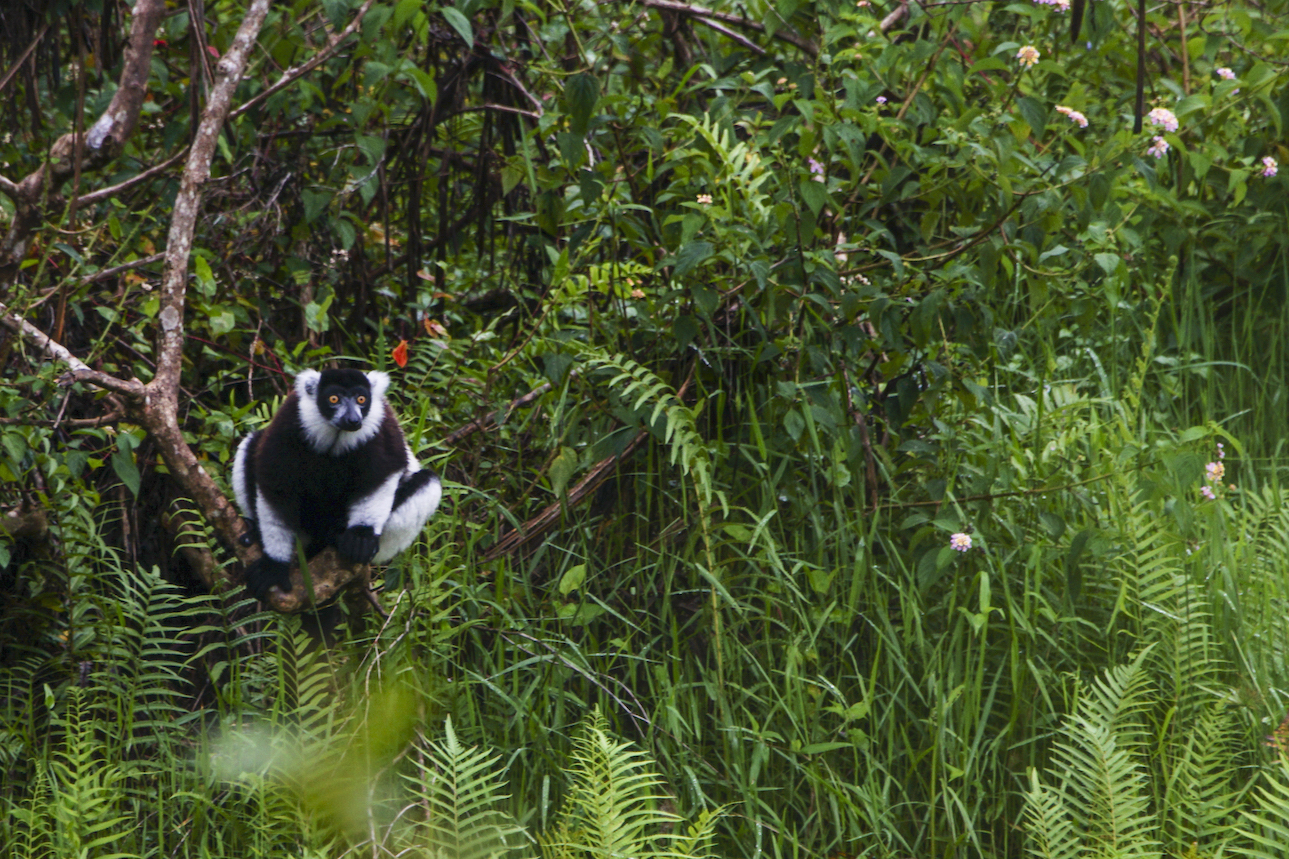Kianjavato Lemur & Reforestation Initiative
Madagascar is home to over 100 species of lemurs, which are found nowhere else on the planet. These unique primates are considered one of the most endangered groups of animals. Lemurs play critical ecological roles in the forests where they live, both as seed dispersers and pollinators. With a majority of their homeland’s forest cover already lost, reforestation is critical to lemur conservation.
Lemurs under threat
Habitat loss and degradation are the primary threat for over 100 species of lemurs found only on the island of Madagascar. A staggering 90% of Madagascar’s forest cover has already been lost, putting many unique species at risk. Among them are the critically endangered black-and-white ruffed lemurs, critically endangered greater bamboo lemurs, and endangered aye-ayes.
Benefitting people and wildlife
Addressing this challenge requires a solution that benefits both people and wildlife. Reforestation protects habitat for lemurs and other wildlife while creating opportunities for human communities who rely on the environment for their livelihoods.
Our work
The Wilder Institute has been working collaboratively on community-based lemur conservation in Kianjavato, Madagascar since 2017. Kianjavato is one of only five areas where greater bamboo lemurs persist. Lemur populations in the region are restricted to small, isolated forest fragments that are unlikely to sustain lemurs in the long-term. We work with our partners to engage local communities in reforestation activities, planting future habitat for lemurs while improving local livelihoods. We work to support three lemur species:
- Greater bamboo lemur, Prolemur simus, Critically Endangered
- Aye Aye, Daubentonia madagascariensis, Endangered
- Black-and-white ruffed lemur, Varecia variegata, Critically Endangered
The Madagascar Biodiversity Partnership is our on-the-ground collaborator, operating more than 20 tree nurseries in the Kianjavato region of southeastern Madagascar. At each nursery, staff grow tree seedlings which will be planted to reconnect forest fragments in the region. A seed collector team specifically seeks out seeds found in lemur feces, as these germinate better and grow into fruit trees favoured by the primates.
Community conservation
The nurseries provide employment to a group of more than 100 single mothers to help them support their families. Nursery work and planting events provide income for local people, a win-win for humans and nature. Individuals that participate in reforestation also earn Conservation Reward Credits, which can be used to purchase sustainable technologies such as solar panels, fuel efficient ‘rocket’ stoves, sewing machines and bicycles.
Our conservation impact
Reforestation efforts help reconnect isolated forest fragments, supporting endangered lemurs and other wildlife to thrive once more. We also support the work of local trackers to monitor aye-aye lemurs, black-and-white ruffed lemurs, and greater bamboo lemurs. The objective of the lemur program is to maximize species recovery and reduce the risk of extinction.
Did you know?
Lemurs are great at seed dispersal in the Madagascar forests where they live. The seeds contained in the fruit they eat are softened as they pass through their digestive tract and are deposited throughout the forest complete with their own little bundle of fertilizer.
Teamwork
We are so grateful to work with the following partners to help restore critical habitat for lemurs:

